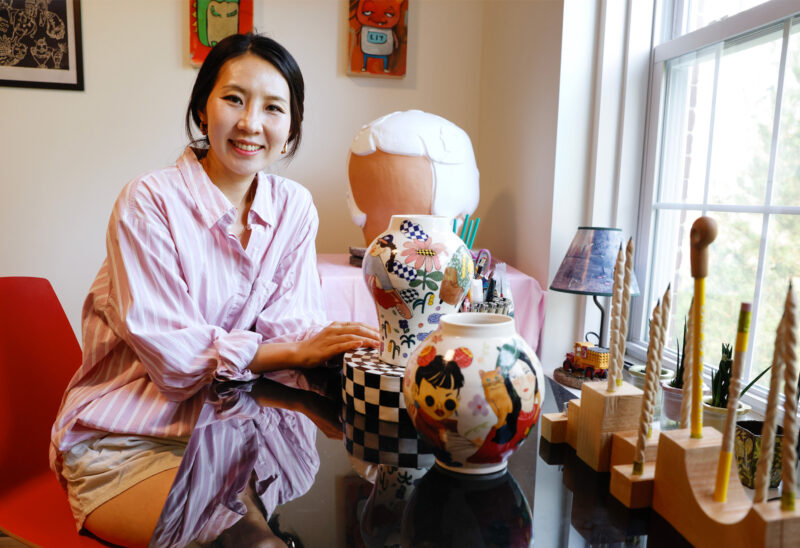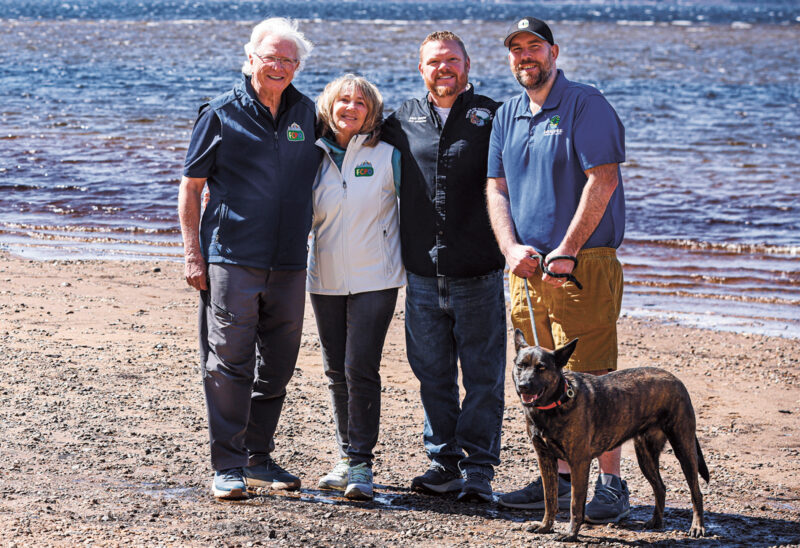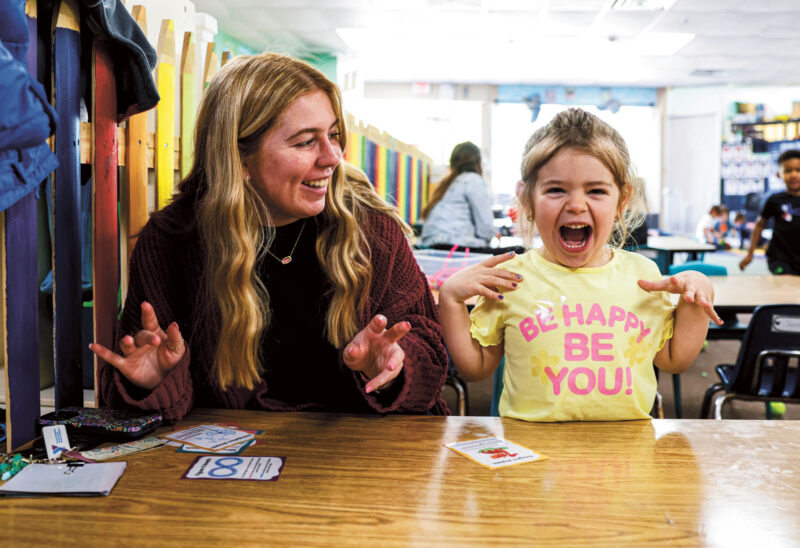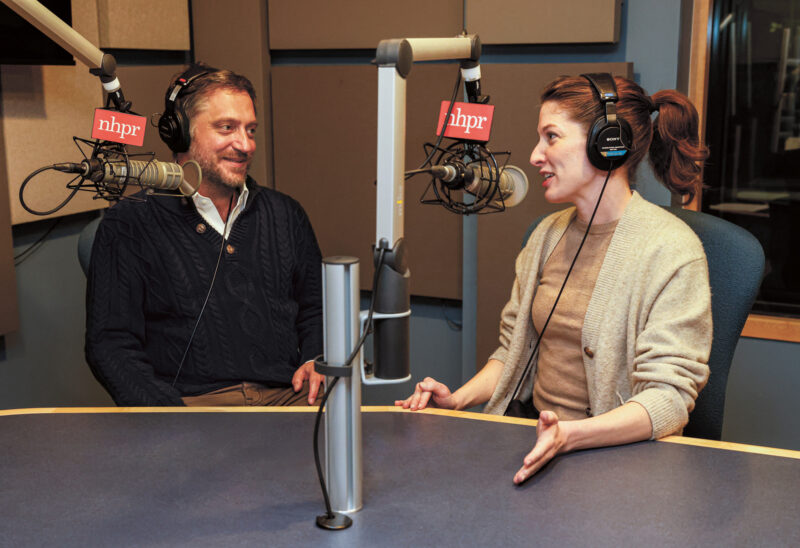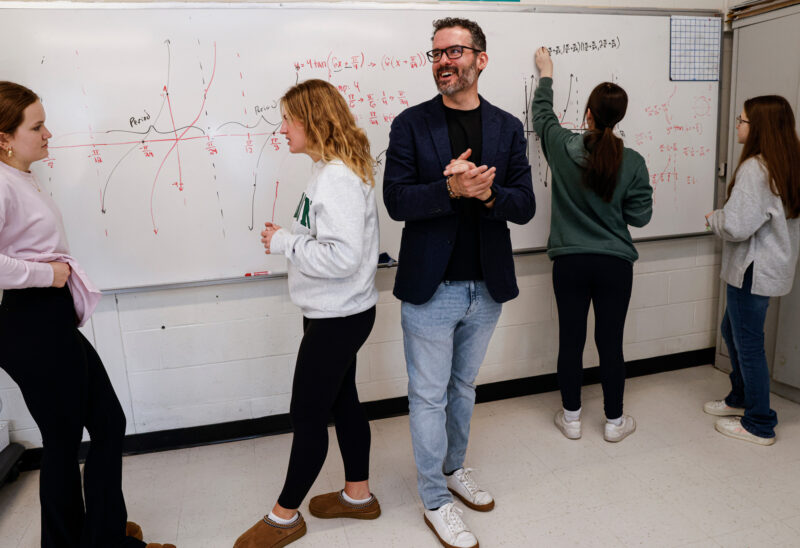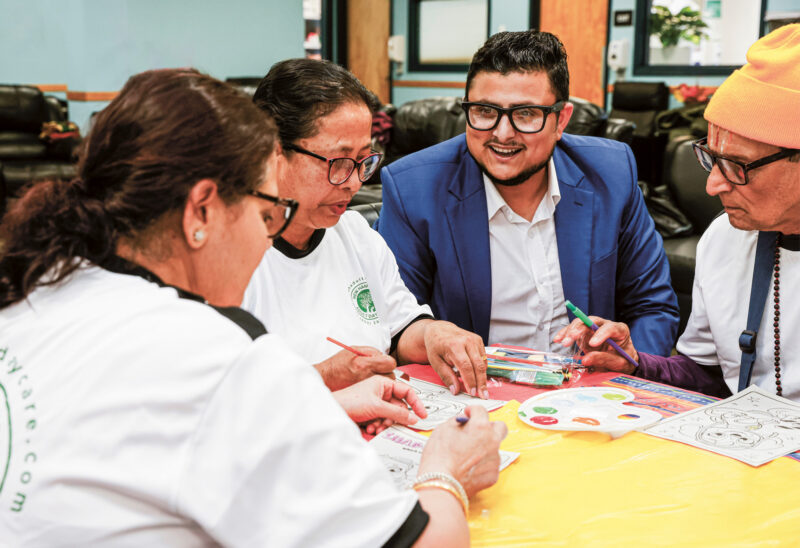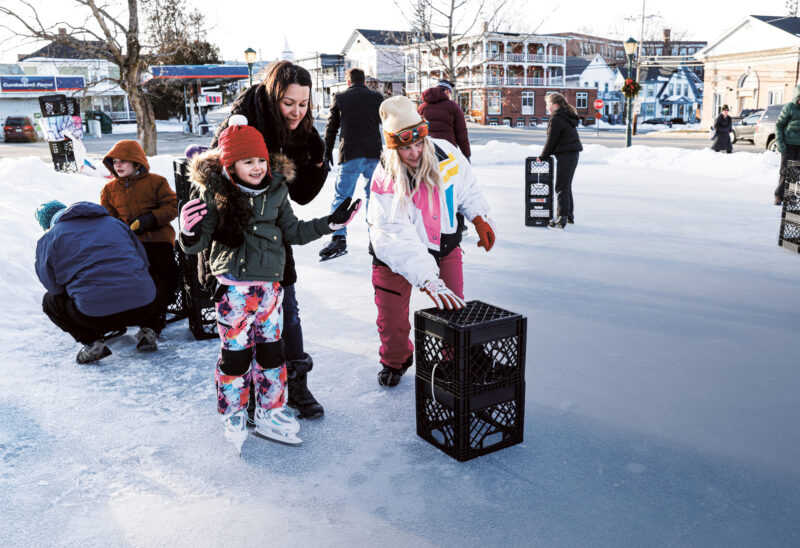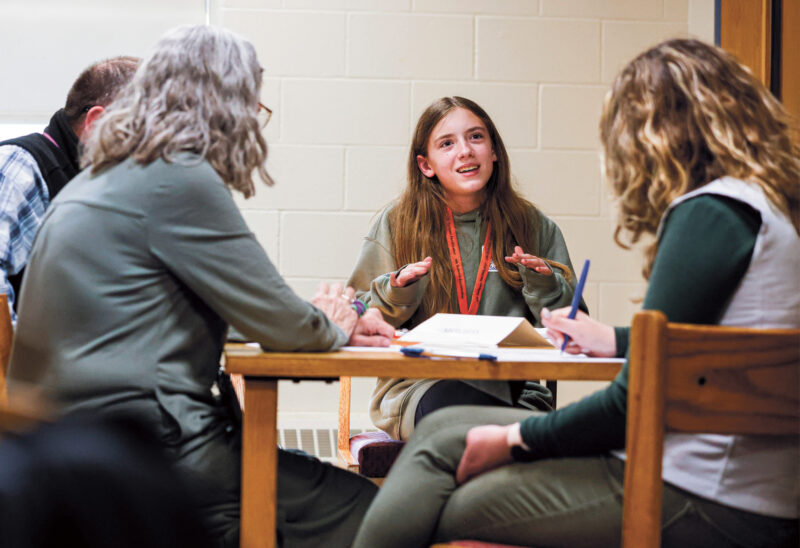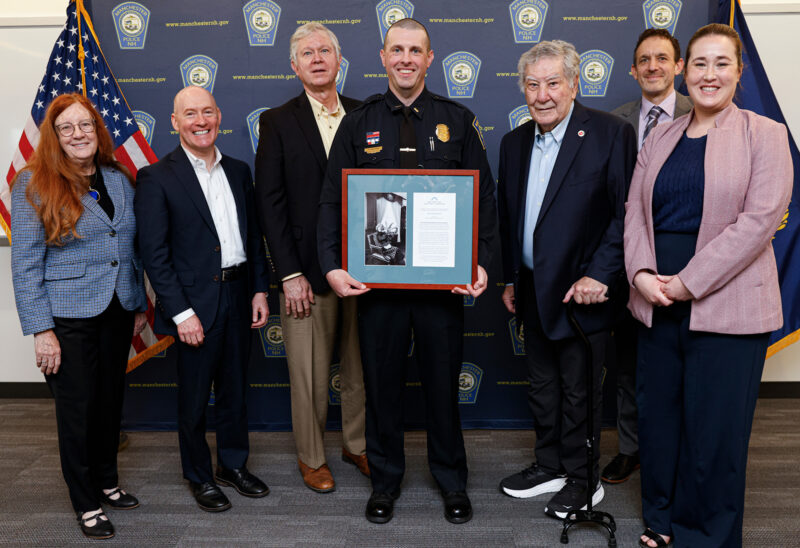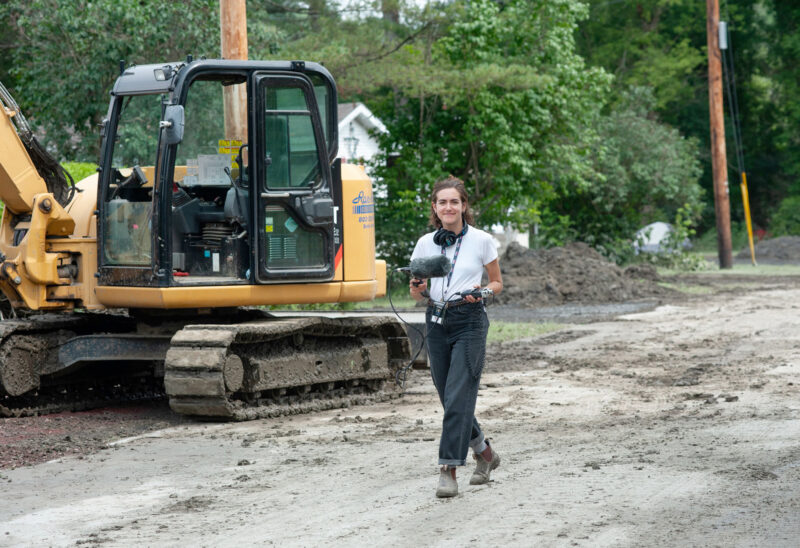If you were to type the words “image of a teacher” into Google, your search would likely return an array of photos that include a chalkboard, the backs of children’s heads, and a teacher at the front of the room wearing a neutral-colored cardigan. But if you were to walk into today’s classrooms, those images would seem outdated. Not only do we no longer use chalk, but many of us have also set aside traditional stand-and-deliver instruction in favor of student-centered learning. We facilitate instead of lecture. And we harness the power of emerging technologies to expand student learning experiences beyond the four walls of a classroom.
Christa McAuliffe was a trailblazer whose passion for transcending the classroom walls and expanding student opportunities continues to inspire teachers across New Hampshire and beyond. I was honored to be selected as the recipient of the 2017 Christa McAuliffe Sabbatical from the New Hampshire Charitable Foundation, which allowed me to pursue innovative teaching and learning during a yearlong project titled “NH Kids Code.”
Over the course of the school year, I traveled to fifth-grade classrooms and taught 800 students how to build a mobile app based on their curriculum. I also developed a “Confident Coders” curriculum for after-school programs, and provided professional development centered on integrating computer science within the regular school day for elementary teachers.
My focus was to inspire teachers and students to think critically, collaborate on real-world tasks, solve problems creatively, and communicate effectively. When students from Wolfeboro made an app that calculated what a human might weigh on other planets, they were thinking critically about rates and ratios within the solar system. When students in Sunapee and Hooksett worked in pairs to develop an app that makes literature recommendations based on a user’s current mood, they collaborated on everything from literary genres to emojis. When students in Sutton created an “I Spy Community Helpers” app for the first-graders in their school, they had to be creative in finding ways to engage younger students. And when students in each community I visited shared their apps with family and friends on the final day of my week-long visit, they communicated their successes (and their failures) with pride and excitement.
Teaching app development is not only a great way to introduce students to computer science, but it is also a fantastic way to make learning come alive for all students. Our students (and we) live in a connected world, and classrooms are no longer confined to four walls. Teaching real-world application and purpose draws in reluctant and disengaged students, and quite often levels the playing field. Populations that are traditionally underrepresented in the field of computer science (women, people of color) are given an equitable learning experience that amplifies the positives of human interaction with technology.
One teacher wrote of the experience: “I watched two girls who I did not realize were great examples of ‘Coding Wizards’ shine in this project. One who does not see herself as a math student especially excelled through this project with her partner! Thanks for opening our eyes to the potential of future coders!”
New Hampshire has recently taken several steps to increase the amount of computer science instruction happening across the state, including the adoption of new standards for students and the development of certification requirements for educators. I was fortunate to have support developing this curriculum from several computer science advocates across the state, including the CS4NH Advisory Committee, the UNH STEM Teacher’s Collaborative, and the White Mountain Science Institute. I am truly grateful for the opportunity I had to network with like-minded colleagues, and I am inspired by their efforts to continue promoting K-12 computer science education. It is an exciting time to be an educator in New Hampshire, especially when opportunities like the Christa McAuliffe Sabbatical exist. What better way to honor the legacy of Christa McAuliffe than dreaming big, reaching for the stars, and making education come alive for our students?
More information, including curricula, tutorials, and a guide for starting a “Confident Coders” after-school program (including a downloadable student workbook and facilitator’s guide) are available on my website, nhkidscode.com.
In their own words: Teachers on NH Kids Code
At each school I visited, I asked teachers to provide feedback on the curriculum. Here are a few things that fellow teachers had to say:
- “I saw students who tend to sit back really put themselves out there and take chances on this project! How amazing is that?”
- “I have a student who struggles in many academic areas throughout the day, but he is a natural coder. He and his partner had a rich collaborative relationship throughout the project and he took a leadership role in the class for this project.”
- “One boy was able to complete his app and then be a ‘helper’ to others who had not yet completed theirs. He doesn’t always finish things first – so this was a huge boost to his self-esteem! Being able to help others made him feel valuable!”
- “A student who is usually difficult to get to focus for a long period of time was so engaged and very quick with coding. Super impressive!”
- “This student often has difficulty keeping up with the pace of the fifth-grade classroom and does not always feel confident in his abilities. When completing the coding, I observed a totally different student – one with confidence and enthusiasm!”
- “Every single one of my students benefited from this project, however I can think of one in particular who I’ve been working with throughout the year to regulate behavior and exhibit more patience. This ongoing, engaging project naturally fostered those skills along with collaboration with his partner. He doesn’t always work well with others, and in this case, he was very cooperative and helpful.”
- “I noticed one of my students, who typically struggles working collaboratively, working with a team member and helping other groups. It was amazing to see how this structured project encouraged collaboration in a safe and influential way.”
- “By relying upon peers for re-teaching and reinforcement, authority was assigned to a variety of different students each day. The expert in the room was not always that same student, and indeed, it was often the student least likely to be the academic all-star.”
- “One of my students who struggles with reading and writing had such a great experience! He taught himself to import sounds from the web!”
- “I saw students who easily get frustrated work through their frustration and really succeed with the task they were trying to achieve.”









